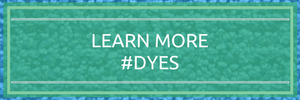Synthetic Turf: Plastic and Artificially Perfect?
Today’s synthetic turf is designed to simulate the experience of practicing and playing on natural grass. Natural grass simply cannot remain lush and resilient if used more than three to four days in a week, in snow or drought, or during months when grass doesn’t grow. This, coupled with an escalating need for durable fields that accommodate multiple teams and activities, the high cost of maintaining a grass sports field or landscape, and the need to conserve water, has prompted a rising number of schools, parks, and municipalities to turn to synthetic turf to meet their needs.
The benefits of synthetic turf for the environment are unrivaled. Synthetic turf has a measurable, positive impact on the environment. A typical artificial turf sports field requires between 500,000 and 1 million gallons of water per year. If changed to a synthetic turf alternative, every square meter of natural grass that is replaced with synthetic saves 2,200 gallons per year. To extend upon, synthetic turf, if reviewed on an annual period, conserves 4 to 8 billion gallons of water per year. Synthetic turf eliminates the need for harmful pesticides and fertilizers, a principal cause of water pollution, which can lead to Algal Bloom: depleted oxygen and damage to wildlife. Finally, the product helps reduce noxious emissions from maintenance equipment and mowers. A push mower emits as much pollution in one hour as 11 cars and a riding mower emits as much as 34 cars. Synthetic turf is—in countless ways—better for the environment than natural grass.
Also, synthetic turf has been proven to be a highly cost-effective investment. A synthetic turf field pays for itself over 3-4 years. The cost of installing and maintaining a synthetic turf field over a 20-year period, including one replacement field, is over three times less expensive per event than the cost of a grass field. Synthetic turf has also been proven to be very versatile, and it maximizes land use with the same surface space. Synthetic turf promotes greater utilization of land than natural grass, as you can achieve more with the same surface space. This is especially useful for highly urbanized environments with limited access to recreational areas, maximizing event spaces, or areas in drought.
To extend upon the benefits of artificial turf, the fact that it is ideal for inclement weather climates must be brought up. Preparing and maintaining natural turf can be particularly challenging in cold or hot climates. Natural turf is generally in poor condition after long winter months, requiring extensive maintenance and re-leveling. Hot climates experiencing drought face significant water shortages. Also, synthetic turf playing fields remain uniform and consistent, season after season, and can be used within hours of installation, without worry of damage. Synthetic turf has also proven to be exponentially more durable than natural grass. Natural grass should not be used more than 20 to 24 hours per week or 680 to 816 hours per year. Synthetic turf can be utilized around 3,000 hours per year with no “recovery time” required.
In closing, I must restate my major points that support synthetic turf being more beneficial than natural grass. In regards to the environment, synthetic turf allows for large amounts of water savings, reduces the use of harmful pesticides, and overall causes less pollution. On the financial side, synthetic turf has been proven to be highly cost effective. Synthetic turf has also proven to be versatile, resilient, and ideal for all weather situations, making it the clear that overall synthetic turf is the dominant of the two turf options.
Click the link below to check out what products we have that work well with creating the best turf.



